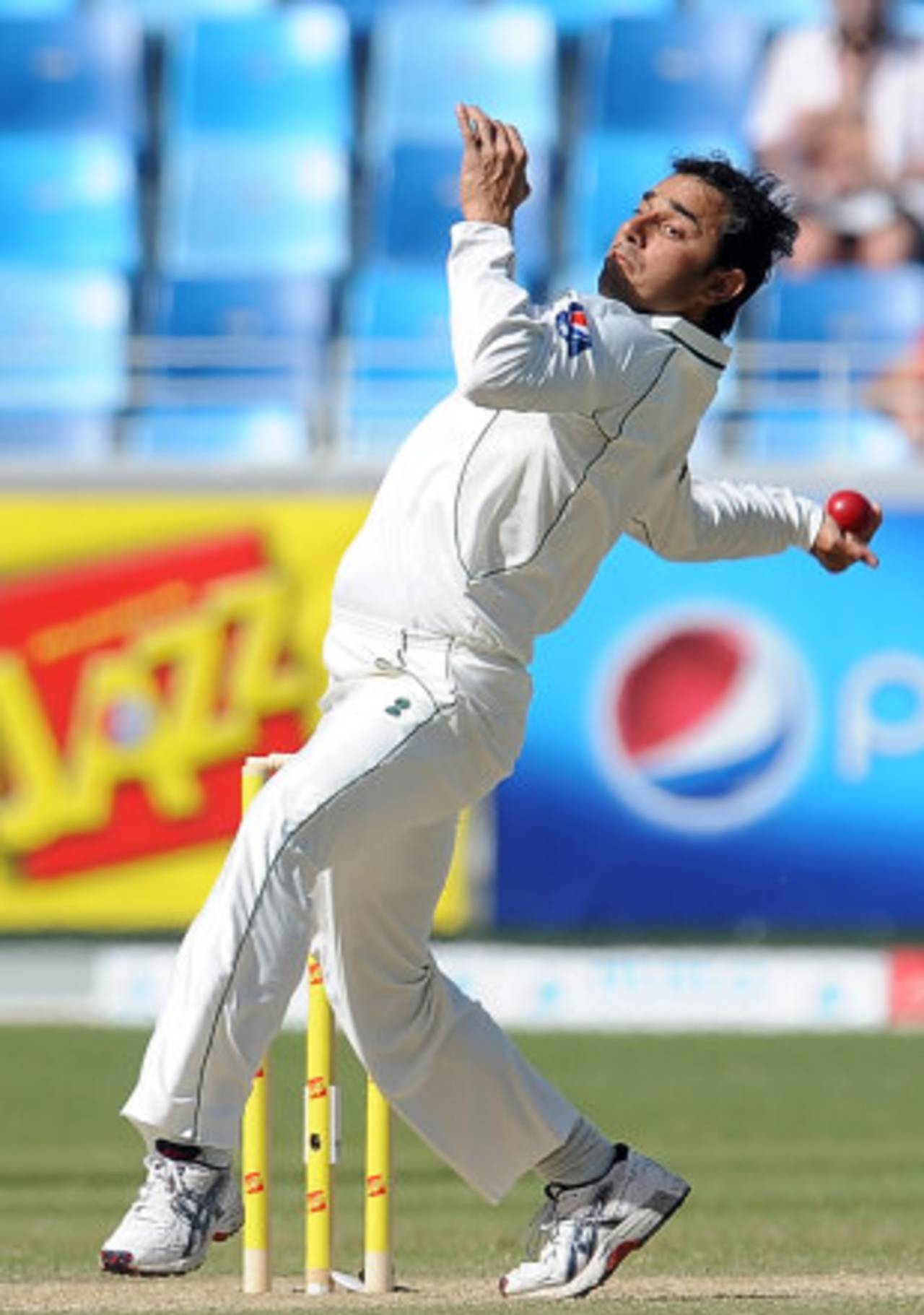A combination of language difficulties and scientific misunderstanding created the confusion over the legitimacy of
Saaed Ajmal's bowling action.
Ajmal, man of the series as Pakistan inflicted a 3-0 whitewash upon England in the Test series in the UAE, sparked confusion in the aftermath of the third Test by appearing to suggest that the ICC had given him special dispensation to straighten his arm beyond the 15-degree tolerance currently permitted.
Speaking to the BBC, Ajmal appeared to volunteer the fact that the ICC had allowed him 23.5 degrees to compensate for an accident in which he injured his arm. Ajmal said: "Someone is telling me my action is bad because the ICC allowed me as a bowler 23.5 degrees, because my arm is not good. A few years ago I had an accident. Otherwise, no problem, the action was cleared by ICC."
The ICC soon denied that was the case and issued a partial explanation but a separate statement from the PCB seemed only to further muddy the waters due to an understandable, though unfortunate, error.
ESPNcricinfo has visited the ICC's headquarters in Dubai, spoken to Dave Richardson, the ICC's general manager of cricket and seen the report compiled by the ICC's Panel of Human Movement at the University of Western Australia in 2009, and can now clarify the misunderstanding.
The bottom line is this: Saeed Ajmal's action is well within the ICC range of tolerance. It is legal. While he does bowl with a bend in his arm, it does not straighten more, on average, than about eight degrees.
Now for the science bit: as Ajmal begins to bring his arm over to bowl, there is, on average, a 23.5 degree bend in his elbow (elbow flexion) - the angle to which Ajmal referred in his BBC interview. As he delivers the ball, his arm straightens (elbow extension) by, on average, eight degrees - well within the 15-degree range of tolerance for international cricket set by the ICC.
This means that his arm is flexed by around 15.5 degrees at the moment of delivery - but it is vital to remember that it is quite legal to bowl with a bent arm: it is the degree that it straightens from the bend that is monitored.
The situation with Ajmal is complicated further by the fact that his elbow also abducts - or rotates sideways - by around 15 degrees in delivery. This is not something that is limited by the rules on the bowling action but helps to create the illusion that his arm has straightened more than it has in reality.
Many well known international bowlers - including bowlers from England - have demonstrated similar amounts of flexion and straightening but, due to the way Ajmal's elbow abducts, the straightening in his action can appear magnified.
While this has led to some apparently incriminating photographs, in this instance the camera can certainly mislead, if not lie.
Furthermore, contrary to widespread conjecture, Ajmal's off-break and quicker ball actually cause his arm to straighten more - though only a fraction more - than his doosra. The 2009 tests also obliged Ajmal to demonstrate his quicker ball - a delivery that approaches 100kph - and found that, in terms of flex and abduction, it did not differ from his stock delivery.
"Ajmal's action has led to some apparently incriminating photographs but in this instance the camera can mislead if not lie"
Any umpire with any concern over Ajmal's action - or that of any other previously tested bowler - has the facility to freeze-frame any delivery from any international match and compare it to images taken during the test procedure at the University of Western Australia. It is understood that there has been no significant change in Ajmal's action since the tests in 2009.
Ajmal, in conducting an interview in a foreign language and attempting to explain a complex bio-mechanical process, inadvertently awakened a controversy that should have been resolved in 2009.
Ajmal tormented the England batsmen in all three Tests, claiming 24 wickets in the series at an average of just 14.7. Their inability to distinguish between his off-break and doosra caused particular confusion and vastly reduced the effectiveness of England's much-vaunted middle order. Ian Bell, Eoin Morgan and Kevin Pietersen all failed to average more than 13.
Richardson confirmed on Tuesday that Ajmal's action does not fall outside the 15-degree tolerance limit. "There is nothing preventing a bowler bowling with a bent arm, provided he does not straighten it beyond the permitted degrees of tolerance," he said.
The PCB also issued a statement attempting to clarify the situation although their claim that Ajmal's elbow has a natural angle of 23 degrees didn't match Richardson's explanation that it was 15 degrees, which also happens to be the ICC's tolerance limit for the
degree of elbow extension (elbow straightening). It appears, in retrospect that the PCB confused flexion - which is the amount the elbow bends - with abduction - which is the sideways movement of the elbow.
The accident to which Ajmal referred took place on a bus while he was on Pakistan duty. The ICC suspect, however, that the unusually high elbow abduction - the angle at which the forearm leads from the elbow - has been with him from birth.
Differing opinions are, generally, to be welcomed and respected. On this subject, however, there can be no room for further speculation or doubt. Ajmal's action is fine. That is a scientific fact.
George Dobell is a senior correspondent at ESPNcricinfo
